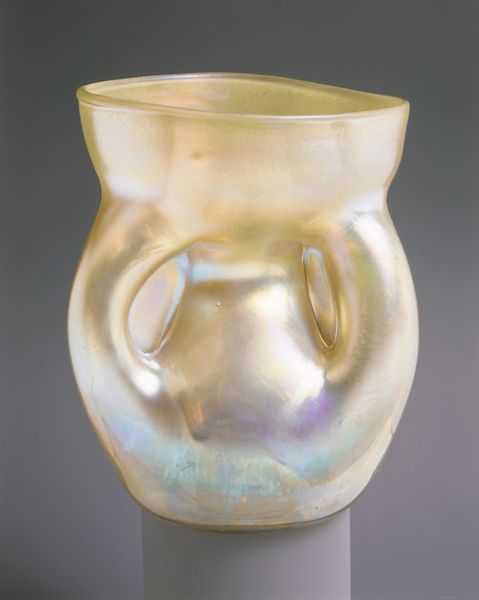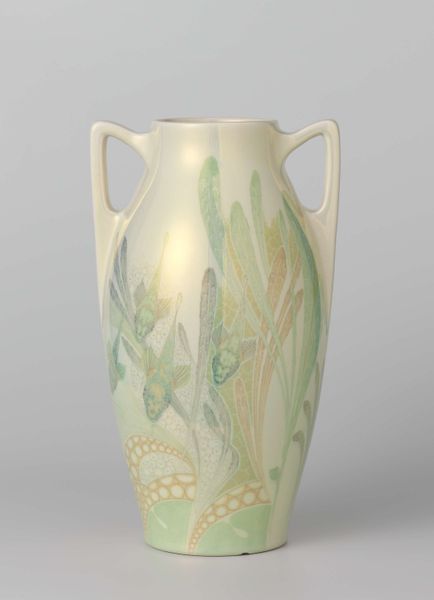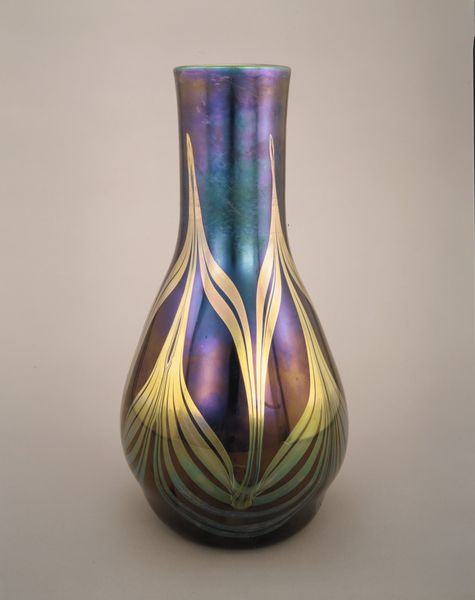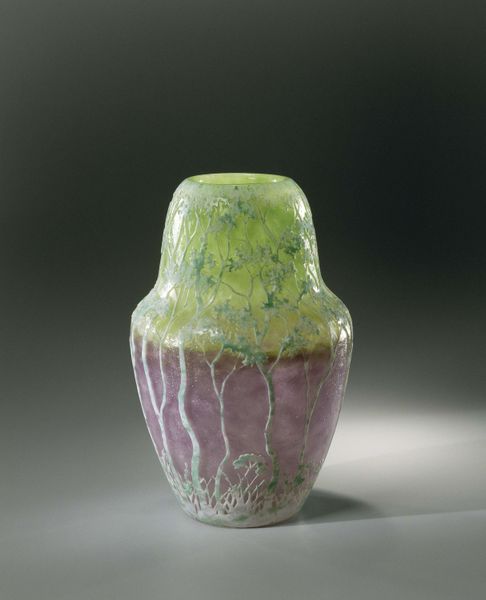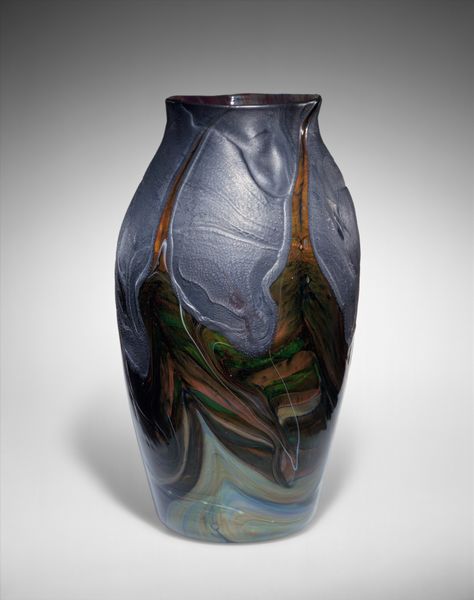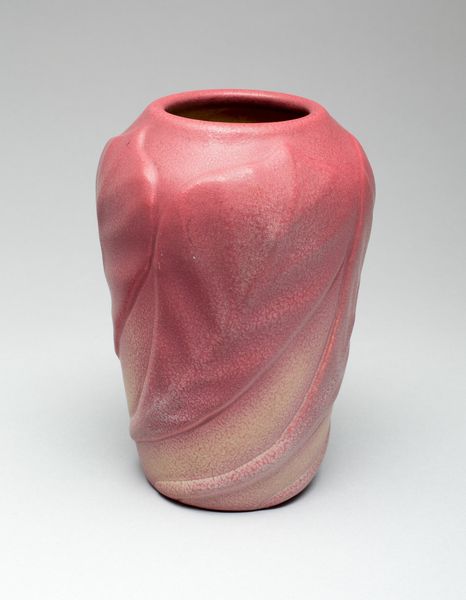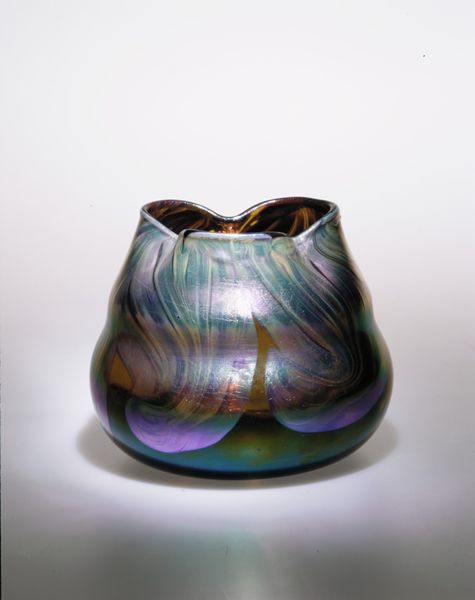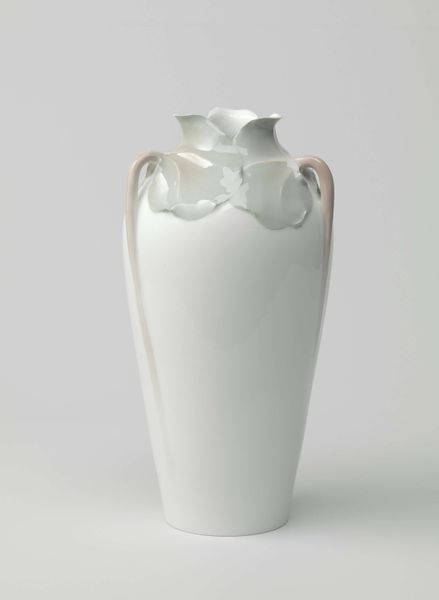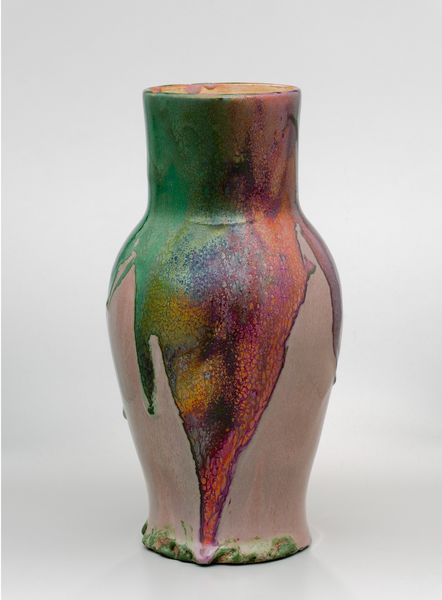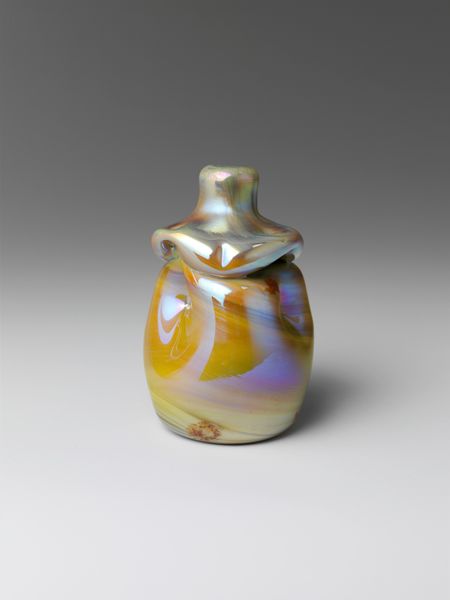
glass
#
art-nouveau
#
glass
#
abstraction
#
decorative-art
Dimensions: H. 7 3/4 in. (19.7 cm)
Copyright: Public Domain
Editor: Right now, we’re looking at a glass vase crafted by Louis C. Tiffany sometime between 1893 and 1896, and held in the collection of the Metropolitan Museum. There’s an ethereal quality to it—an opalescent surface shimmering with pastel shades. How do you even begin to interpret something this dreamlike? Curator: Ah, Tiffany's magic. Forget utility for a moment, and imagine this: You’re wandering through a moonlit garden, the air thick with floral perfume. What does it feel like? This vase captures that fleeting moment. Tiffany wasn't just making decorative objects; he was bottling atmosphere. Editor: It really does evoke that feeling. Those swirling, elongated shapes... Are they supposed to be specific flowers or just abstract forms? Curator: That's the delicious ambiguity, isn't it? The Art Nouveau movement rejected the rigid structures of the past. So, maybe they're flowers, maybe they’re just echoes of them. Tiffany used iridescent glass – he called it "Favrile" – to mimic the way light plays on natural surfaces. It’s not just about what you see, but how the light dances on it. Does that light conjure any thoughts? Editor: I think it’s about capturing a transient, sensory experience, an atmosphere... rather than pinning down something concrete. Curator: Precisely! And, doesn’t that invite you into its spell, even now? What began as decoration has evolved into an imaginative world where we can ponder the limits of perception and inspiration. Editor: I hadn’t thought of it that way, as a sort of self-contained, alternate reality almost. I appreciate how Tiffany used these subtle techniques to really conjure that kind of experience. Curator: My pleasure. It is a joy to ponder the magic that great artists create.
Comments
No comments
Be the first to comment and join the conversation on the ultimate creative platform.
